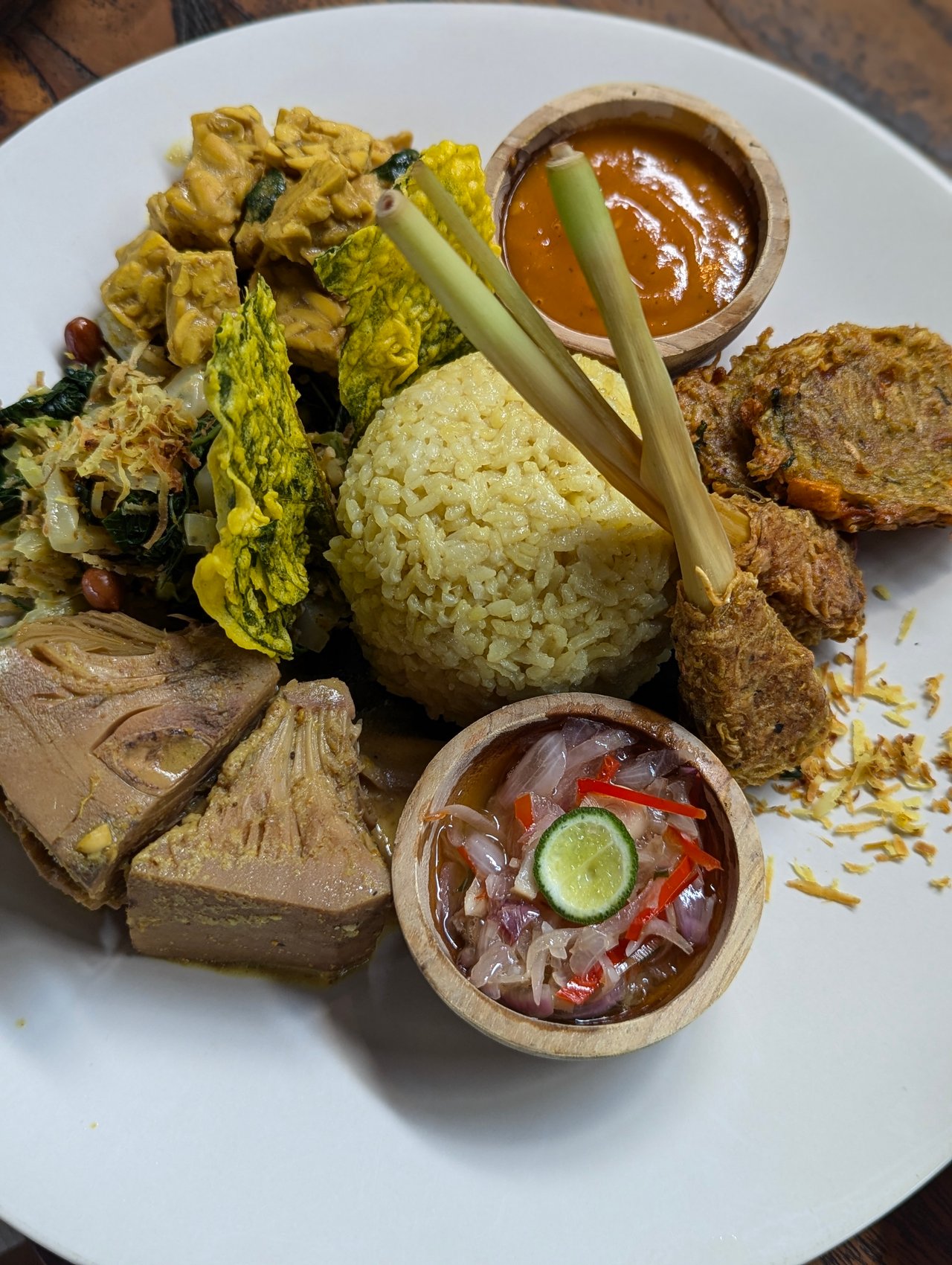Vegan Nasi Campur: A Harmony of Flavors and Culture
0 comments
Nasi campur which translates to "mixed rice," is a popular dish in Indonesian and Balinese cuisine, renowned for its variety and diversity. Traditionally, nasi campur is a plate of rice served with a selection of different side dishes, which may include meats, vegetables, peanuts, eggs, and fried-shrimp krupuk (crackers). However, as the global shift towards plant-based diets gains momentum, the vegan version of this iconic dish has emerged, offering a flavorful and nutritious alternative that respects both tradition and the growing demand for ethical and sustainable eating.
The essence of nasi campur lies in its diversity. The dish is a true reflection of the Indonesian archipelago’s rich cultural tapestry, where each region contributes its unique flavors and ingredients. A typical vegan nasi campur might feature a variety of plant-based elements, such as tempeh (fermented soybean cake), tofu, assorted vegetables, sambal (spicy chili paste), and coconut-based dishes. Each component brings its own texture, taste, and aroma, creating a harmonious blend that is both satisfying and exciting to the palate.
For instance, the use of tempeh and tofu in vegan nasi campur is not only a great source of plant-based protein but also pays homage to traditional Indonesian ingredients. Tempeh, a staple in Javanese cuisine, offers a nutty flavor and firm texture, which contrasts beautifully with the softness of tofu. These proteins are often marinated and grilled or stir-fried, adding layers of flavor to the dish.

Nutritional Balance and Ethical Eating
This vegan version of nasi campur also aligns with ethical and environmental concerns. As more people become aware of the environmental impact of animal agriculture and the ethical considerations regarding animal welfare, veganism is increasingly seen as a viable and responsible lifestyle choice. By choosing vegan nasi campur, diners can enjoy a meal that is not only nutritious and delicious but also reduces their carbon footprint and supports a more sustainable food system.
Preserving Tradition While Embracing Change
While vegan nasi campur is a modern adaptation, it still respects the core principles of the traditional dish. The creativity involved in crafting a vegan version allows chefs to experiment with flavors and textures, introducing innovations while preserving the cultural significance of nasi campur. For example, vegan sambal, which typically excludes the fermented shrimp paste (belacan) found in traditional recipes, can be just as vibrant and flavorful with the use of umami-rich ingredients like soy sauce or miso.
Vegan nasi campur is more than just a dish; it is a celebration of Indonesia’s rich culinary heritage, adapted to meet the demands of contemporary ethical and nutritional standards. By embracing plant-based ingredients, vegan nasi campur offers a delicious, nutritious, and environmentally friendly option that honors tradition while paving the way for future culinary innovations. Whether enjoyed in a traditional setting in Indonesia or at a vegan restaurant halfway around the world, vegan nasi campur stands as a testament to the timeless appeal of good food and the power of cultural adaptation.

Comments